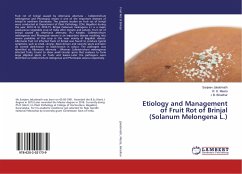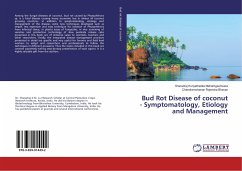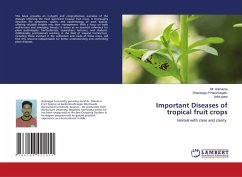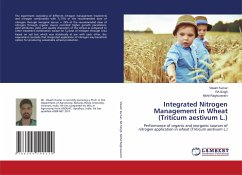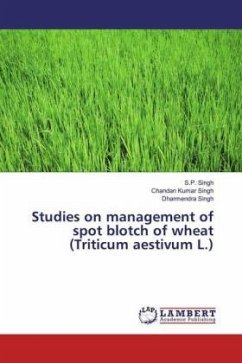
Etiology and management of Karnal bunt of wheat
Karnal bunt
Versandkostenfrei!
Versandfertig in 6-10 Tagen
41,99 €
inkl. MwSt.

PAYBACK Punkte
21 °P sammeln!
Karnal bunt caused by Tilletia indica Mitra (Neovossia indica Mitra (Mundkur) was first recorded in April, 1930 from Botanical Research Station, Karnal (Haryana) on wheat cultivar, foundation and Punjab A. The disease was prevalent in the sub continent since long, infecting native wheats grown over North Western India but it never caused serious yield reduction. However, the disease appeared in serious proportions in early 1970s with the introduction of dwarf Mexican Wheat Varieties into India and Pakistan. Till 1974-75 the disease remained restricted to Jammu and Kashmir, Punjab and Tarai reg...
Karnal bunt caused by Tilletia indica Mitra (Neovossia indica Mitra (Mundkur) was first recorded in April, 1930 from Botanical Research Station, Karnal (Haryana) on wheat cultivar, foundation and Punjab A. The disease was prevalent in the sub continent since long, infecting native wheats grown over North Western India but it never caused serious yield reduction. However, the disease appeared in serious proportions in early 1970s with the introduction of dwarf Mexican Wheat Varieties into India and Pakistan. Till 1974-75 the disease remained restricted to Jammu and Kashmir, Punjab and Tarai region of Uttar Pradesh. In some places, it appeared in the epidemic form in different years. In the absence of strict domestic quarantine regulation it spreaded to new areas in North Western Wheat belt. However, Madhya Pradesh, southern Rajasthan, Maharashtra and Peninsular India are free from Karnal bunt due to high temperatures. It is also reported from Nepal, Iran, Mexico, United States, South Africa, Brazil, Afghanistan, Syria, Turkey, Lebanon, Sweden, Poland, Italy.






